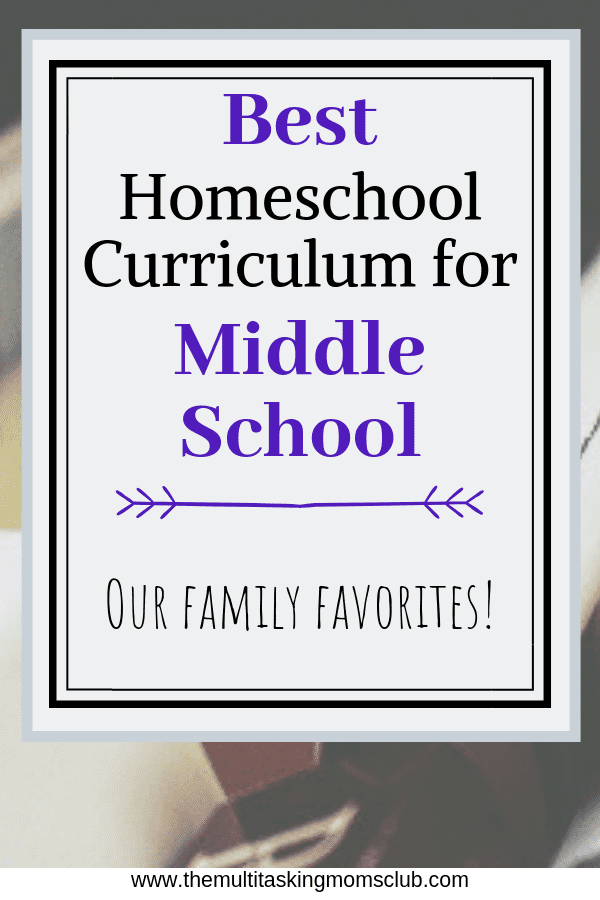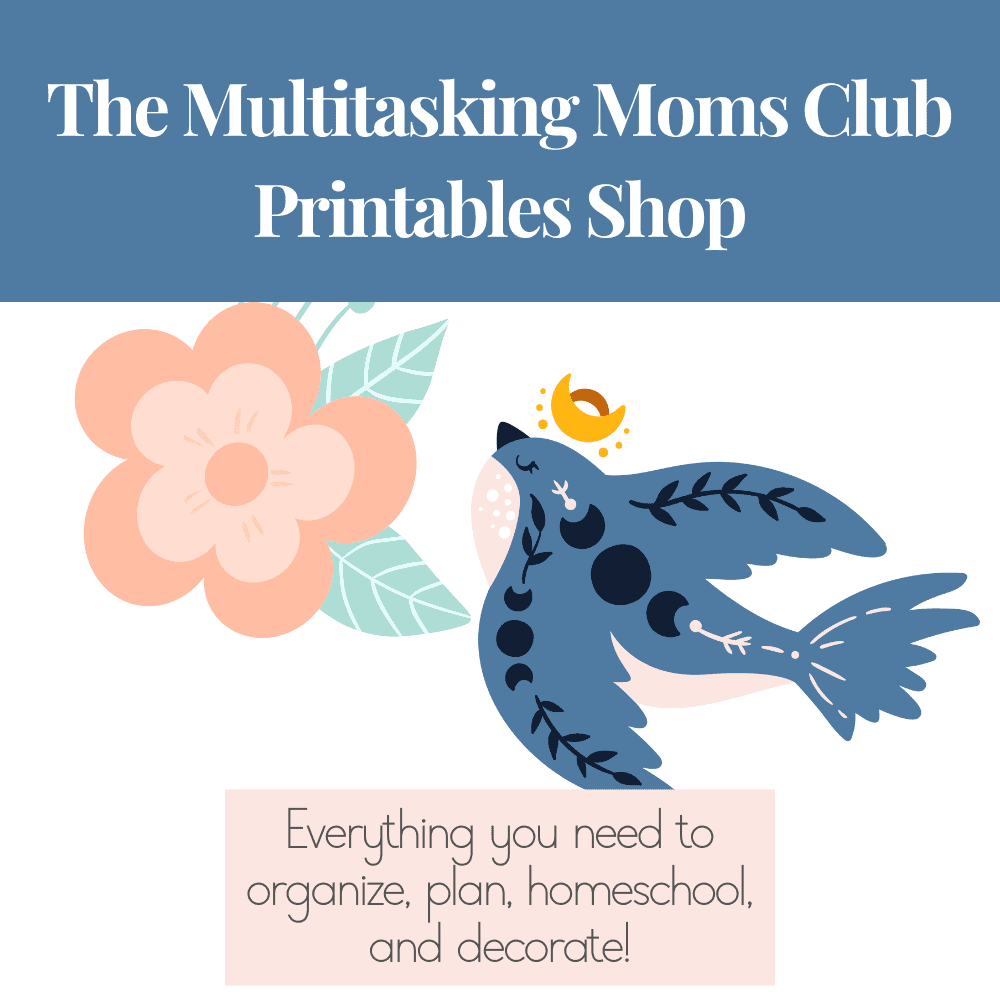I’ve said it before and I will say it again: I am a curriculum junkie.
If you are already a homeschooler you know exactly what I mean. For those of you new to the world of homeschooling, let me explain.
curriculum junkie : /ke rikyelem jeNGke/ : noun informal. 1. a parent who teaches their children at home who is dangerously obsessed with textbooks, workbooks, learning programs, and educational systems; 2. an otherwise frugal parent who loses all control of the purse strings when presented with a sales pitch and promises of genius for their children; 3. one easily swayed by dreams of peaceful homeschool days with children as enamored with the textbook choices as the junkie.
After spending years lost in the homeschool curriculum matrix, I have learned the sad truth: there is no such thing as a perfect curriculum.
On the other hand, I have found some gems in the rough that I wholeheartedly recommend to the parents of middle schoolers.
For me, the best curriculum books, workbooks, or programs meet or exceed the following criteria:
- They are affordable.
- They are easy for the homeschool parent to implement.
- They are full of good, useful content presented in an easy to follow format.
- They work for different learning styles.
- They actually get done by my finicky kids.
Here are my choices for the best middle school homeschool curriculum.

This post may contain affiliate links. Please see my Disclosure page for details. As an Amazon Associate I earn from qualifying purchases.
Mastering Essential Math Skills

I listed Mastering Essential Math Skills in The Best Homeschool Curriculum Choices for the Elementary School Years, because I love it so much. But, don’t think you can’t switch to this program in middle school. There are 2 basic levels and there are numerous workbooks that focus on particular skills (i.e. Geometry, Decimals and Percents, etc.). You can easily cover more than one book a year until you get to the Algebra book, No-Nonsense Algebra.
What I love about Mastering Essential Math Skills: It is cheap and so very easy to use. Every lesson is one page long (until No-Nonsense Algebra where the lessons are 2 pages long) and each lesson is set up the same: a few review questions, an introduction to a new concept, practice problems, and one word problem. Each lesson has a corresponding video lesson accessed through an online portal (a code is given in the book that gives you access).
How I recommend using Mastering Essential Math Skills: Start with Book 1. If your child is a bit weak on a section, say integers, you can then get the Whole Numbers and Integers book for extra practice. Once solid, you can move to Book 2, then Pre-Algebra Concepts, and finally to No-Nonsense Algebra.
———————————————————————————————————–
Learning Adventures
Learning Adventures is hands-down the single greatest unit study program on the market for middle schoolers! This program had 3 volumes that each cover one year of middle school and offers instruction in English, History, Science, Bible, and Humanities. You only need to add your own Math program.
What I love about Learning Adventures: Unlike other unit study programs, Learning Adventures is affordable and does not require hours of prep time for the parent. Teaching from Learning Adventures is hands-on for the parent. I sat by my daughter’s side every day and went through each lesson with her. That might sound daunting to some, but it accomplished two things: one, my daughter’s need for one on one instruction was met and, two, the bonds strengthened between me and my daughter that year are still holding us tight. My biggest homeschooling regret is that we were only able to use Volume One in this series. If life circumstances had not thrown a wrench in our homeschool, I definitely would have continued on to Volumes Two and Three.
How I recommend using Learning Adventures: Each volume has exactly 180 days of instruction making one full year of lessons. It is best to add library books that expand on the content presented in the text, but even if you can’t get to the library, there is still more than enough meat in each lesson for a thorough day of learning. Sit and read from the text together. Talk about what you have covered. Work on any projects. Then, let your student complete the independent work.
—————————————————————————————————————-
What We Believe Series

The What We Believe series is a world view study created for upper elementary and middle schoolers. It is a fantastically written series of books that make children seriously consider what they believe and why. It sounds heavy, but the subject matter is actually presented in a very relatable and relational way. Kids learn to think through the subject matter via stories and Bible lessons, as well as through journaling. This series includes four Volumes: Who Is God? And Can I Really Know Him?, Who Am I?, Who Is My Neighbor?, and What On Earth Can I Do?
What I love about the What We Believe series: First, I thoroughly enjoyed reading these books aloud to my daughter. We pondered questions together and had some very interesting conversations along the way. I probably learned as much as she did! Second, I like that this series also teaches other world views in a very respectful way. There was no belittling of those that believe differently. I respect that.
How I recommend using What We Believe: Because this material can be very thought-provoking, I recommend actually reading the lessons together, so you can answer your child’s questions immediately. I also found my daughter just wanting to talk about some little phrase or idea presented in the books, so sitting with her helped a lot. I also recommend the student journals that are sold separately. I would read aloud while my daughter wrote her thoughts in the journal. Now, all these years later, she still has those journals to ponder.
—————————————————————————————————————–

Easy Grammar

Easy Grammar has been a favorite of homeschoolers for many years. Easy Grammar first approaches grammar by introducing prepositions, then prepositional phrases, then nouns and verbs. Eliminating the prepositional phrases first makes finding nouns and verbs easier. It is a unique approach that has proven to be very effective.
What I love about Easy Grammar: It is inexpensive, very easy to use, and each lesson is short and to the point. Once you and your child have a grasp on how the system works, it becomes an open and go curriculum that doesn’t require a lot of time. Easy breezy.
How I recommend using Easy Grammar: First, I photocopied the page of prepositions in the front of every book and hung it on the bulletin board by the desk. This way we all were constantly learning prepositions almost by osmosis. We used the Teacher’s Text and the workbooks until I believed my children had their grammar down pat. Then, I switched to just using the Daily Grams practice books to keep the information fresh in their minds.
———————————————————————————————————-
Learning Tree Books

Learning Tree books are a fresh approach to child-directed learning. The student picks nine things they want to learn more about, then they check out at least nine books from the library on those topics. Learning Tree workbooks are then used as a journal to keep track of all that was learned. These workbooks offer an organizational strategy for completing child-directed work. There are numerous book themes to choose from including Funschooling With Minecraft and Homeschooling Creative Girls.
What I love about Learning Tree journals: I have come to believe that child-directed learning should be incorporated into every student’s education, because it forces them to take ownership of their learning. Many families use only child-directed learning (unschooling), but I have opted to include it along with my non-negotiables (English, Math, History, Science). The Learning Tree journals have been a great way to accomplish this goal.
How I recommend using Learning Tree journals: I have used these in numerous ways over the years. Because I work outside the home in April and May, during that time we break from “normal” homeschooling and my kids can work through one of these journals. At other times, I have incorporated them while we are in transition (moving, taking care of loved ones, etc.), when our homeschool routine was upended. I have also made Fridays child-directed learning days, where my kids can work on their own interests and catalog their learning in these journals.
——————————————————————————————————————-
Honorable mentions
I can’t say I have found the definitive middle school Science and Language Arts curricula yet, but there are a few that we have used and had good results with. They don’t fit all my criteria from above. Many are expensive and can be more difficult to implement day in and day out. But, I still think they deserve a mention.
Apologia Science
Another perennial favorite among homeschoolers, Apology science is well known for its conversational style and thoroughness. Sometimes the new earth philosophy can be over-bearing for those who lean toward the old earth school of thought, but, by and large, the topic doesn’t come up much. I like that these books teach science with the constant reminder that God is a glorious creator. Tip: many homeschool co-ops use Apology for science classes. I started outsourcing this in 6th grade to the co-op. That way I did not have to buy all the lab equipment, nor explain concepts that I didn’t thoroughly know or understand myself (I was a History major, after all!). Much easier for me.
————————————————————————————————————
Sequential Spelling
Sequential Spelling is another program I mentioned in The Best Homeschool Curriculum Choices for the Elementary Years. I did continue using this in middle school with my daughter. If your child still needs to work on their spelling, this is the series I recommend. It is inexpensive and easy to use.
—————————————————————————————————————-
Jump In Writing
Jump In is a writing workbook that I recommend for students who need a more focused, organized way to learn writing. Honestly, my son hated this book and we ditched it after several lessons because I didn’t want him to hate writing. On the other hand, Jump In works well for students like my daughter who already love to write, but can’t always think of what to write. This workbook is a good, inexpensive tool for the right student.

